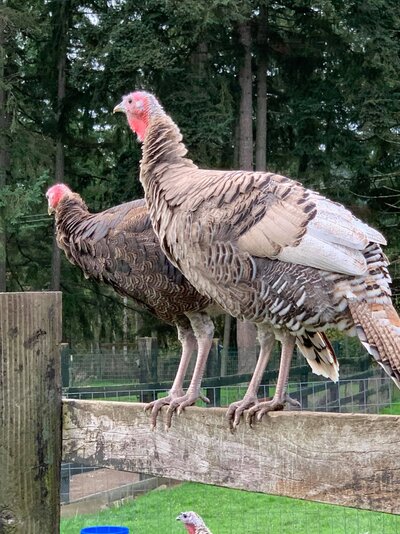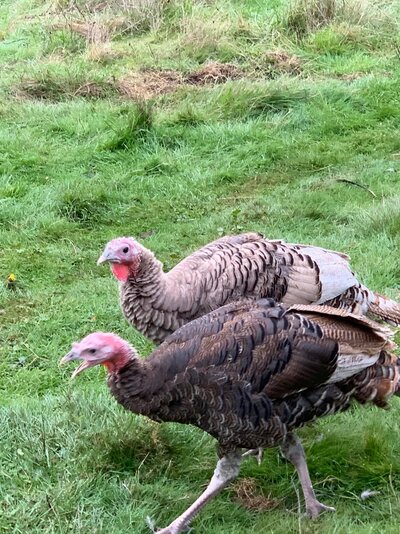Capricoco
Songster
- Mar 17, 2022
- 215
- 190
- 111
My turkey hens hatched out some poults, and I got curious as to what color they might be so I ran stuff through porters and they were sexlinks (bourbon red hen x royal palm Tom = red bronze males and golden Narragansett females according to the calculator) I assumed that they’d look identical as chicks and moved on but as more and more hatched out I noticed there where 2 different kinds of brown chicks, ones with a regular brown pattern and some with less dark brown. So I went back to porters to consult the color tabs and after looking at the varieties I’d get from the pairing, it looks like the regular brown ones are the red bronzes and the ones with less dark brown are the golden Narragansett’s? Just checking but that means they’re sexlinked right?










